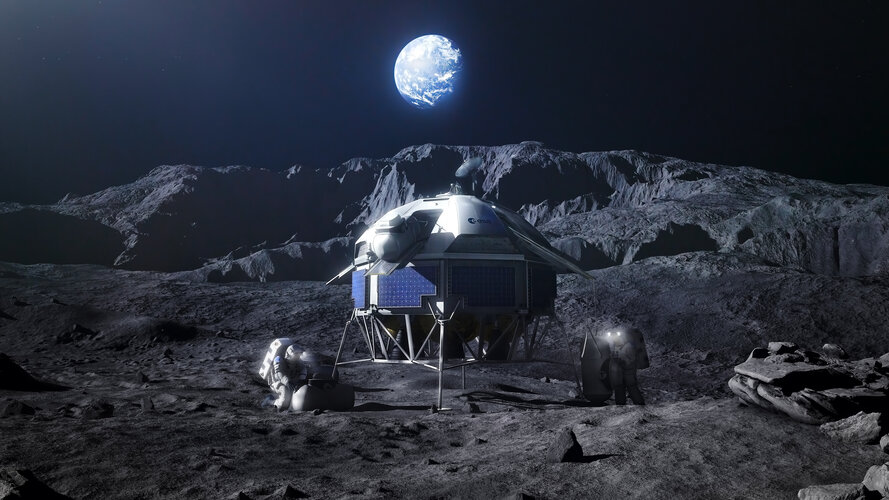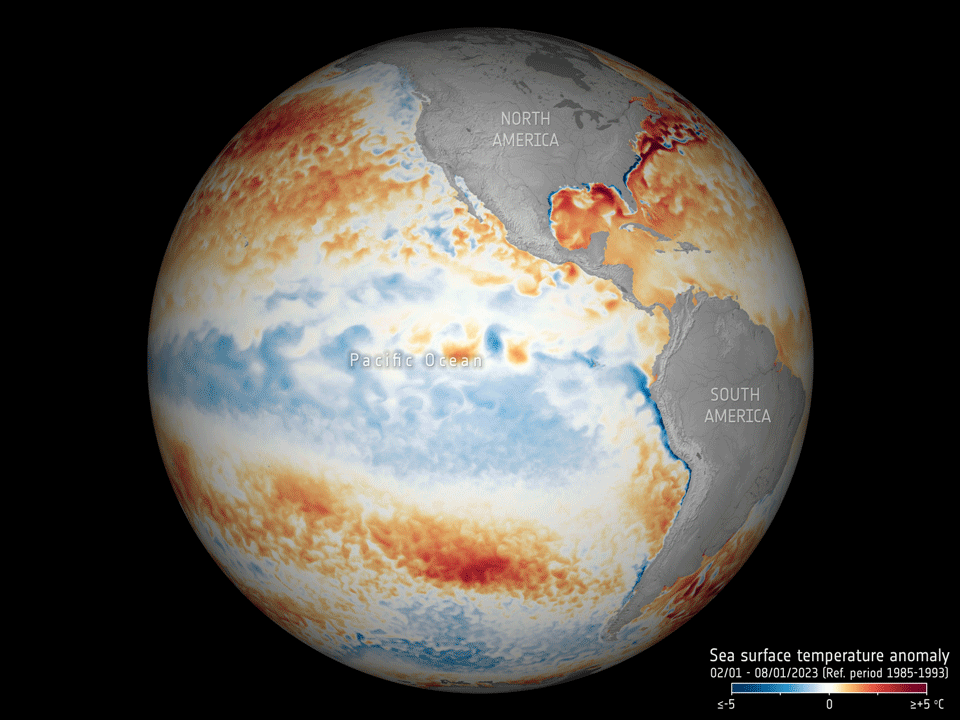
Copernical Team
Curved spacetime in a quantum simulator
 The theory of relativity works well when you want to explain cosmic-scale phenomena - such as the gravitational waves created when black holes collide. Quantum theory works well when describing particle-scale phenomena - such as the behavior of individual electrons in an atom. But combining the two in a completely satisfactory way has yet to be achieved. The search for a "quantum theory of gravi
The theory of relativity works well when you want to explain cosmic-scale phenomena - such as the gravitational waves created when black holes collide. Quantum theory works well when describing particle-scale phenomena - such as the behavior of individual electrons in an atom. But combining the two in a completely satisfactory way has yet to be achieved. The search for a "quantum theory of gravi NASA's Spitzer, TESS find potentially volcano-covered Earth-size world
 Astronomers have discovered an Earth-size exoplanet, or world beyond our solar system, that may be carpeted with volcanoes. Called LP 791-18 d, the planet could undergo volcanic outbursts as often as Jupiter's moon Io, the most volcanically active body in our solar system.
They found and studied the planet using data from NASA's TESS (Transiting Exoplanet Survey Satellite) and retired Spit
Astronomers have discovered an Earth-size exoplanet, or world beyond our solar system, that may be carpeted with volcanoes. Called LP 791-18 d, the planet could undergo volcanic outbursts as often as Jupiter's moon Io, the most volcanically active body in our solar system.
They found and studied the planet using data from NASA's TESS (Transiting Exoplanet Survey Satellite) and retired Spit Martian crust like heavy armour
 A strong quake in the last year of the NASA Mars InSight mission, enabled researchers at ETH Zurich to determine the global thickness and density of the planet's crust. On average, the Martian crust is much thicker than the Earth's or the Moon's crust, and the planet's main source of heat is radioactive.
In May 2022, the Marsquake Service at ETH Zurich recorded the largest quake ever obser
A strong quake in the last year of the NASA Mars InSight mission, enabled researchers at ETH Zurich to determine the global thickness and density of the planet's crust. On average, the Martian crust is much thicker than the Earth's or the Moon's crust, and the planet's main source of heat is radioactive.
In May 2022, the Marsquake Service at ETH Zurich recorded the largest quake ever obser What's so special about large grains on Mars
 The Perseverance rover has been exploring the top of the Western fan in Jezero crater for some time now, but new observations never fail to offer new insights. Sitting at the edge of Belva crater on top of the fan, Perseverance has been investigating sediments that were transported to their location via the ancient streams that flowed into Jezero.
Each unique rock, boulder, or sediment tha
The Perseverance rover has been exploring the top of the Western fan in Jezero crater for some time now, but new observations never fail to offer new insights. Sitting at the edge of Belva crater on top of the fan, Perseverance has been investigating sediments that were transported to their location via the ancient streams that flowed into Jezero.
Each unique rock, boulder, or sediment tha Smaller, lighter space-based imaging spectrometers with high spectral resolution
 Researchers have developed a new smaller, lighter design for space-based imaging spectrometers with high spectral resolution. These high-dispersion imaging spectrometers could be used onboard spacecraft or satellites to study the Earth's atmosphere or the atmospheres of other planets.
James P. McGuire, Jr. from NASA's Jet Propulsion Laboratory in Southern California will present the new re
Researchers have developed a new smaller, lighter design for space-based imaging spectrometers with high spectral resolution. These high-dispersion imaging spectrometers could be used onboard spacecraft or satellites to study the Earth's atmosphere or the atmospheres of other planets.
James P. McGuire, Jr. from NASA's Jet Propulsion Laboratory in Southern California will present the new re Private satellites give boost to public sector in climate fight
 From satellites that can pinpoint the sources of industrial pollution, to others that track hurricane movements by the hour, space has emerged as a key front in the fight against climate change.
New launches are - literally and metaphorically - skyrocketing, and giving rise to increased cooperation between space agencies and private companies.
Among the most fruitful areas of collabora
From satellites that can pinpoint the sources of industrial pollution, to others that track hurricane movements by the hour, space has emerged as a key front in the fight against climate change.
New launches are - literally and metaphorically - skyrocketing, and giving rise to increased cooperation between space agencies and private companies.
Among the most fruitful areas of collabora Safeguarding space infrastructure
 Space traffic is a pressing issue. With over 20.000 satellites expected to be launched in the next decade, various orbits are becoming increasingly congested. The situation is especially pronounced in Low Earth Orbit (LEO).
The abundance of satellites is not only responsible for "an unprecedented space traffic jam". It is also the cause of a large amount of space debris, or 'junk', which i
Space traffic is a pressing issue. With over 20.000 satellites expected to be launched in the next decade, various orbits are becoming increasingly congested. The situation is especially pronounced in Low Earth Orbit (LEO).
The abundance of satellites is not only responsible for "an unprecedented space traffic jam". It is also the cause of a large amount of space debris, or 'junk', which i Gilmour Space Technologies forges head as PM opens new rockets factory
 Gilmour Space Technologies, a leading Australian aerospace company, was honored to welcome Prime Minister Anthony Albanese to their state-of-the-art manufacturing facility today. The visit marked the official unveiling and 'launch' of the Eris rocket, Australia's inaugural domestically developed orbital launch vehicle.
Prime Minister Anthony Albanese expressed his enthusiasm for this remar
Gilmour Space Technologies, a leading Australian aerospace company, was honored to welcome Prime Minister Anthony Albanese to their state-of-the-art manufacturing facility today. The visit marked the official unveiling and 'launch' of the Eris rocket, Australia's inaugural domestically developed orbital launch vehicle.
Prime Minister Anthony Albanese expressed his enthusiasm for this remar Virtual reality brings ESA’s Argonaut Moon lander to life

A team of students and researchers are using virtual reality (VR) to bring ESA’s Argonaut lunar lander concept to life at the European Astronaut Centre.
Argonaut is a lunar lander that will deliver scientific instruments and cargo to the Moon at the end of this decade. Interns and scientists involved in the simulations are part of ESA’s Extended Reality (XR) laboratory, German Aerospace Centre DLR and the Spaceship EAC initiative.
Our oceans are in hot water

Adding to the grim list of record ice losses, record air temperatures and record droughts, which have all hit the headlines recently, the temperature of the surface waters of our oceans is also at an all-time high. With an El Niño looming, concerns are that we will soon be facing even worse extremes. Satellites orbiting overhead are being used to carefully track the patterns that lead up to El Niño to further understand and predict the consequences of this cyclic phenomenon against the backdrop of climate change.
